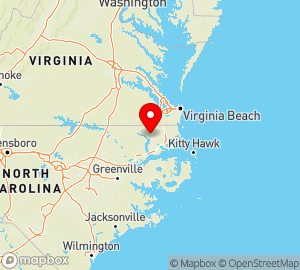North Carolina
North Carolina State Information

www.ncgov.com
Area (sq mi):: 53818.51 (land 48710.88; water 5107.63) Population per square mile: 178.30
Population 2005: 8,683,242 State rank: 0 Population change: 2000-20005 7.90%; 1990-2000 21.40% Population 2000: 8,049,313 (White 70.20%; Black or African American 21.60%; Hispanic or Latino 4.70%; Asian 1.40%; Other 4.80%). Foreign born: 5.30%. Median age: 35.30
Income 2000: per capita $20,307; median household $39,184; Population below poverty level: 12.30% Personal per capita income (2000-2003): $27,068-$28,071
Unemployment (2004): 5.50% Unemployment change (from 2000): 1.80% Median travel time to work: 24.00 minutes Working outside county of residence: 26.40%
List of North Carolina counties:
North Carolina Parks
- US National Parks
- Urban Parks
- State Parks
- Parks and Conservation-Related Organizations - US
- National Wildlife Refuges
- National Trails
- National Scenic Byways
- National Heritage Areas
- National Forests
North Carolina
Twelfth state; adopted the U.S. Constitution on November 21, 1789 (joined the Confederacy on May 20, 1861, and was readmitted to the Union on June 25, 1868)
State capital: Raleigh Nicknames: The Tarheel State; Old North State; Turpentine State State motto: Esse quam videri (Latin “To be rather than to
seem”) State beverage: Milk State bird: Cardinal (Cardinalis cardinalis) State birthplace of traditional pottery: Seagrove area State blue berry: Blueberry; red berry: Strawberry State boat: Shad boat State carnivorous plant: Venus flytrap State Christmas tree: Fraser fir State colors: Red and blue State folk dance: Clogging; popular dance: Shag State dog: Plott hound (Canis familiaris) State fish: Channel bass (Sciaenops ocellatus) State flower: Dogwood blossom (Cornus florida); wild
flower: Carolina lily (Lilium michauxii) State freshwater trout: Southern Appalachian brook trout State fruit: Scuppernong grape State gemstone: Emerald State historical boat: Shad boat State insect: Honeybee (Apis mellifera) State mammal: Eastern gray squirrel (Sciurus carolinensis) State reptile: Eastern box turtle (Terrapene carolina) State rock: Granite State shell: Scotch bonnet (Phalium granulatum) State song: “The Old North State” State tartan: Carolina tartan State toast: “Tar Heel Toast” State tree: Pine (Pinus palustris) State vegetable: Sweet potato (Ipornoea batatas)
More about state symbols at:
www.naturalsciences.org/funstuff/ncsymbols/symbols.html
http://www.secretary.state.nc.us/kidspg/homepage.asp
SOURCES:
AmerBkDays-2000, p. 782 AnnivHol-2000, p. 194
STATE OFFICES:
State web site: www.ncgov.com
Office of the Governor 166 W Jones St 20301 MSC Raleigh, NC 27699 919-733-5811 fax: 919-733-2120 www.governor.state.nc.us
Secretary of State PO Box 29622 Raleigh, NC 27699 919-807-2005 fax: 919-807-2010 www.secstate.state.nc.us
North Carolina State Library
109 E Jones St
Raleigh, NC 27699
919-807-7400
fax: 919-733-8748
statelibrary.dcr.state.nc.us
Legal Holidays:
North Carolina
a state in the eastern USA. Area, 136,500 sq km. Population, 5.082 million (1970), 22 percent of which is Negro. The urban population is 45 percent of the total. The capital is Raleigh.
The eastern part of North Carolina lies within the Atlantic Coastal Plain. The Appalachian Mountains, which rise to an elevation of 2,037 m at Mount Mitchell, and the Piedmont Plateau are in the west. The average January temperatures range from 0°C in the northwest to 8°C in the southeast, and the average July temperatures range from 24°C in the north to 26°C in the south. Annual precipitation ranges from 1,000 to 1,300 mm. The state’s rivers, including the Roanoke and Cape Fear rivers, are navigable in their lower courses and have rapids in the Piedmont area. Broad-leaved, hardwood forests have been partially preserved in the Appalachians.
In terms of the number of people employed in manufacturing (770,000 in 1973), North Carolina is second only to Texas among the southern states. The textile industry, which employs 269,700 people (1970), is the principal branch of industry; its enterprises are located primarily in small cities and factory towns. The state is the country’s leading producer of cotton fabrics. It also has tobacco, woodworking (furniture), and garment industries. Other important industries include aluminum smelting, machine building (electrical equipment), and the production of chemical fibers. Agriculture, especially land cultivation, plays a major role in the economy. Tobacco is the principal crop (330,000 tons in 1971), and North Carolina is the country’s leading tobacco producer. Peanuts, corn, and vegetables are also cultivated. Cattle (1.1 million head, 1972) and hogs (1.9 million) are raised.